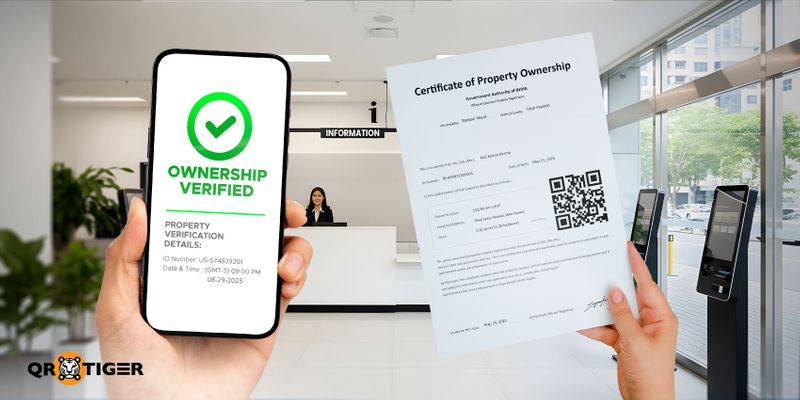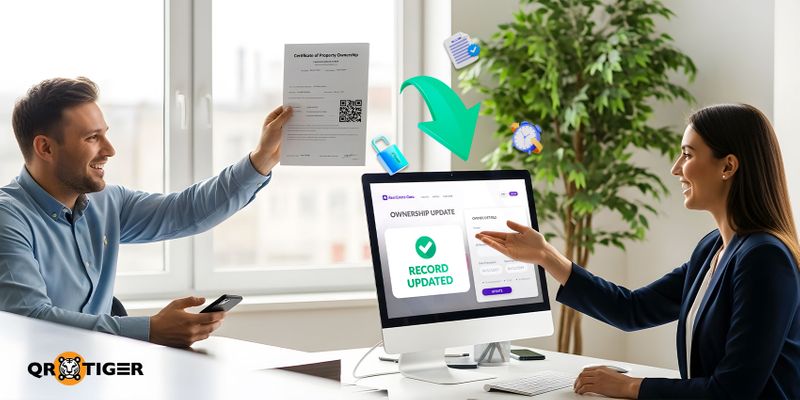Uttar Pradesh Plans QR Code Verification for Property Ownership by 2026

The Uttar Pradesh (UP) government is preparing to introduce QR code verification for property ownership, a move aimed at curbing fraud and making transactions more transparent.
MoS (Independent Charge) for Stamp and Court Fee, Registration Minister Ravindra Jaiswal said the reforms are part of the state’s Vision 2047 plan, with some of the initiatives to roll out by March 2026.
It will integrate land registry data with the revenue department and provide homebuyers with instant ownership rights after registration.
Historical ownership records are expected to go online within six months.
Table of Contents
Uttar Pradesh’s Vision 2047 plan

The state government is rolling out a series of reforms under its ambitious ‘Vision 2047’ plan. These initiatives aim to modernize property transactions, reduce disputes, and improve transparency.
Here are the main highlights:
- Cheaper tenancy agreements: Fixed fee of ₹500–₹1,000 to replace 4% stamp duty.
- Simpler family settlements: Inheritance cases (up to 4 generations) can be registered for a flat ₹5,000.
- Modern offices & ATMs: Passport Seva-style upgrades; stamp paper ATMs dispensing ₹10–₹100 papers; ₹800 crore annual sales.
- Benefits for women homebuyers: 1% stamp duty rebate on properties up to ₹1 crore, saving up to ₹1 lakh.
- Revenue through ease: No hike in circle rates; focus on simpler, more accessible property transactions.
- Streamlined stamp duty: Rules cut from 42 parameters to 18–20 to reduce confusion and fraud.
The need for QR codes arise
Property transactions in Uttar Pradesh have long suffered from slow updates and limited transparency. Right now, a buyer’s name can take 35 to 40 days to appear in official revenue records after registration.
That delay creates legal uncertainty. It also opens room for disputes and fraud. Buyers remain exposed until the paperwork shows up in the ledger.
The QR code plan responds directly to that gap. The idea is simple: assign a unique QR code to every registered property. Scan the code with a smartphone and you get instant access to the property’s record.
“Soon, anyone planning to buy property can scan a QR code to know its ownership details, past transactions, and whether the seller is legally entitled to sell,” Jaiswal told Press Trust India.
How the QR code verification for property will work

Through real-time verification, QR codes are expected to reduce disputes and protect buyers from fraud. Each code will display the property’s current ownership, past sales, and whether the seller has the legal right to sell.
Historical records are also being digitized, so a simple scan of the QR code will allow buyers to confirm key details instantly.
The state is pairing this digital ID with operational changes. Revenue officials will be posted at registration offices to verify records at the point of sale. Once a transaction is approved, the buyer’s name is updated immediately in the system.
No more waiting for over a month to get formal recognition. Immediate recording means immediate ownership rights. That cuts the window where mistakes or fraudulent claims can occur.
Think of the QR code as the property’s official ID card that’s readable anywhere, verifiable by officials, and built to keep paperwork honest.
For businesses or government agencies planning similar rollouts, using the best QR code generator ensures that property-related QR codes are secure, scannable, and easy to manage.
Building trust in property transactions
UP’s reforms go beyond QR code verification for property; they aim to modernize how property, rental, and settlement agreements are managed in the state. By March 2026, residents could see instant ownership verification, simplified agreements, and easier access to official documents.
For homebuyers, landlords, and tenants alike, the promise is clear: fewer delays, fewer disputes, and stronger trust in the property market, especially when backed by a trusted QR code generator to ensure secure, verifiable records.


